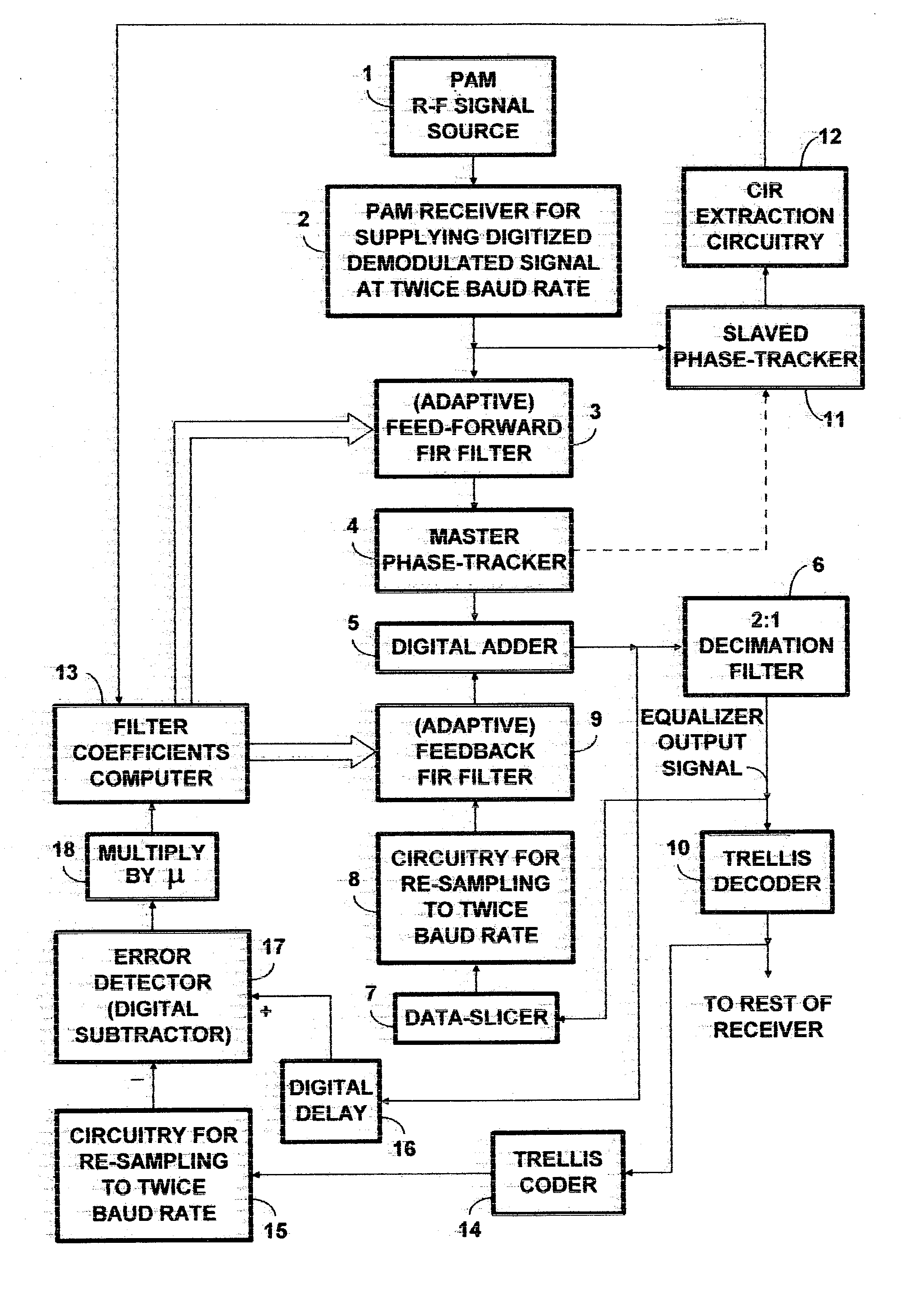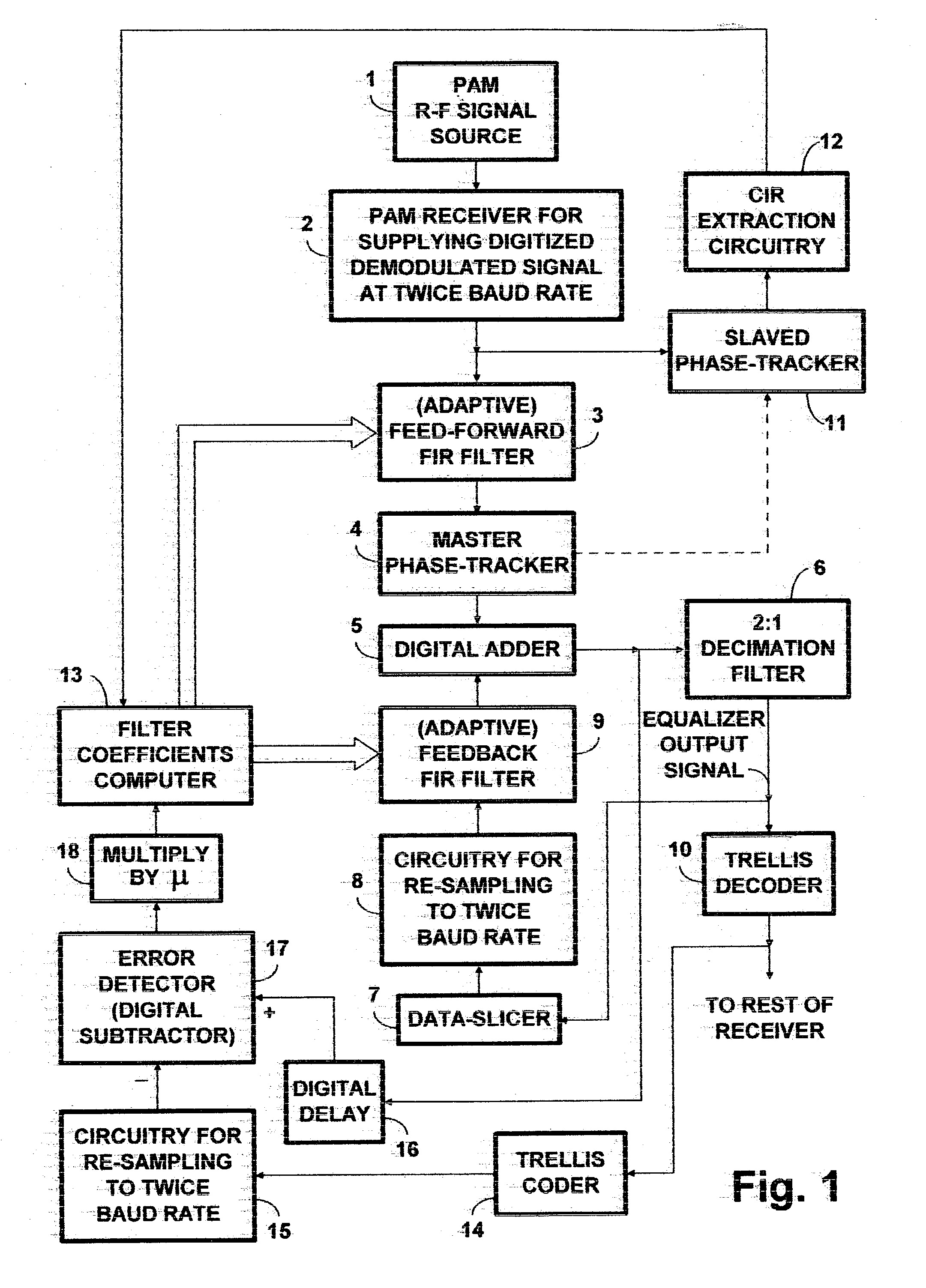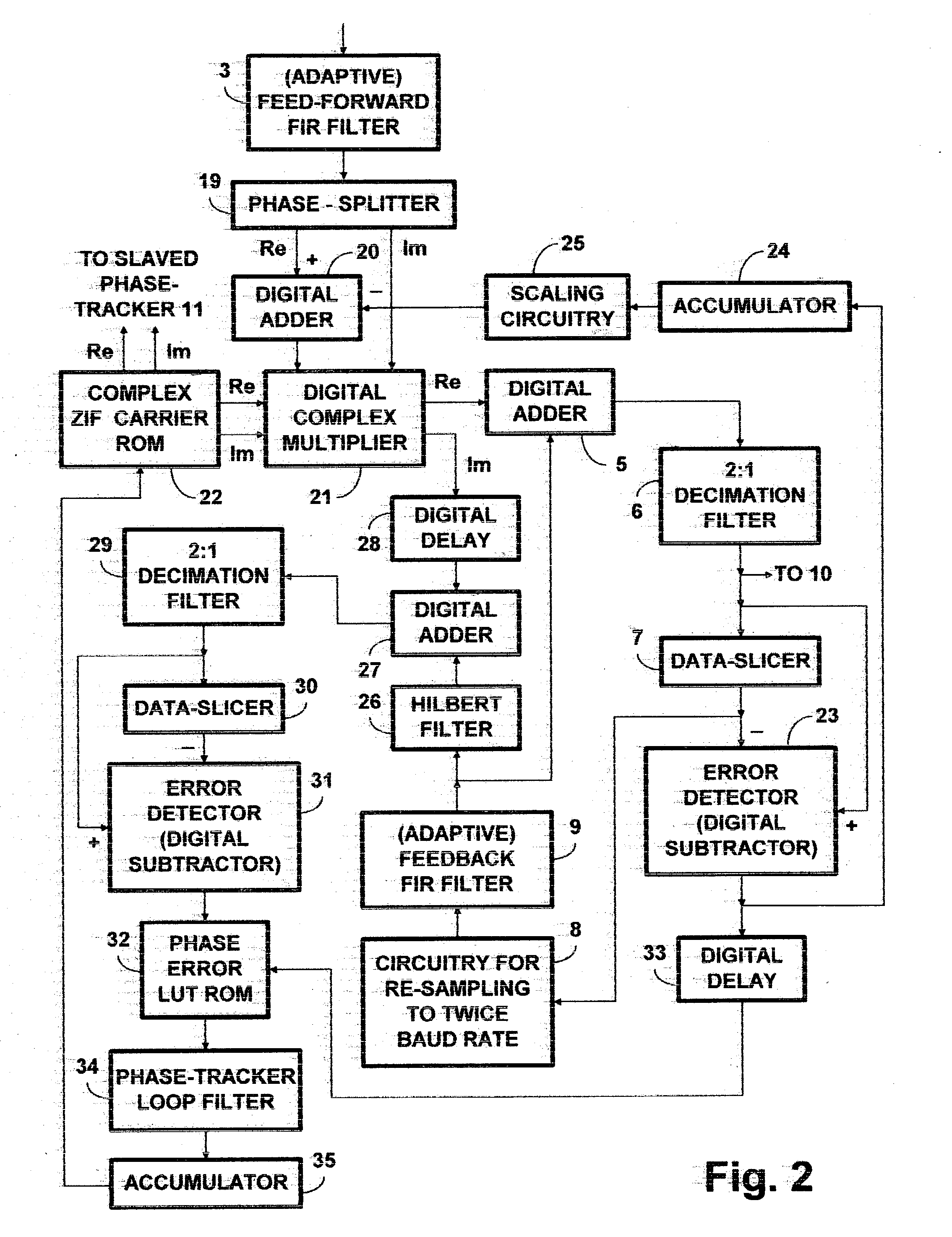PAM radio signal receiver with phase-tracker succeeding adaptive FIR filtering and preceding adaptive IIR filtering
a phase tracker and radio signal technology, applied in the field of radio signal receivers, can solve the problems of reducing the performance of fractional equalizers, affecting the signal-to-noise ratio (snr) of received dtv signals, and being too expensive to select amongst crystal-controlled first local oscillators. , to achieve the effect of avoiding the introduction of appreciable delay and reducing intersymbol interferen
- Summary
- Abstract
- Description
- Claims
- Application Information
AI Technical Summary
Benefits of technology
Problems solved by technology
Method used
Image
Examples
Embodiment Construction
[0029]FIG. 1 shows a receiver for radio-frequency signals with digital modulation, which receiver is suitable for incorporation into a digital television (DTV) receiver. A source 1 of pulse-amplitude-modulated (PAM) radio-frequency signals, such as an antenna or a cable connection, is connected for supplying those signals to a PAM receiver 2 for supplying digital samples of a demodulated signal at twice baud rate. The PAM receiver 2 supplies this twice-baud-rate baseband signal to adaptive digital filtering operated to provide fractional channel-equalization including echo suppression. FIG. 1 shows the adaptive digital filtering comprising a feed-forward finite-impulse-response (FIR) filter 3 with adjustable weighting coefficients and an infinite-impulse-response (IIR) filter composed of elements 5-9. The response of the feed-forward FIR filter 3 is supplied as the phase-tracker 4 input signal, and the phase-tracker 4 output signal is supplied as the IIR filter input signal. This II...
PUM
 Login to View More
Login to View More Abstract
Description
Claims
Application Information
 Login to View More
Login to View More - R&D
- Intellectual Property
- Life Sciences
- Materials
- Tech Scout
- Unparalleled Data Quality
- Higher Quality Content
- 60% Fewer Hallucinations
Browse by: Latest US Patents, China's latest patents, Technical Efficacy Thesaurus, Application Domain, Technology Topic, Popular Technical Reports.
© 2025 PatSnap. All rights reserved.Legal|Privacy policy|Modern Slavery Act Transparency Statement|Sitemap|About US| Contact US: help@patsnap.com



